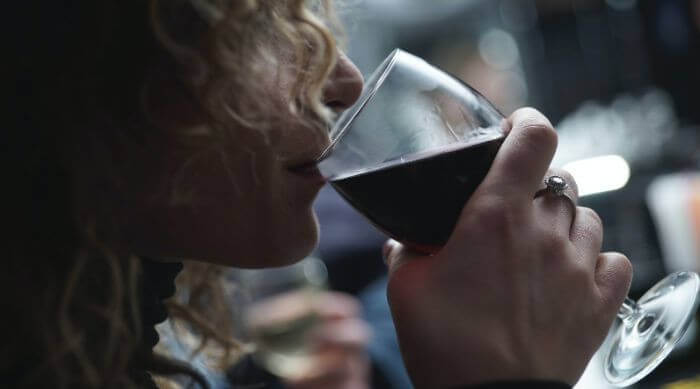Navigating the world of wine can be a delightful journey. A common starting point is understanding the fundamental differences between red and white wines.
What is the difference between red wine and white wine? There are several differences between red and white wines. While they share a common origin in the humble grape, red and white wines offer remarkably distinct experiences, thanks to grape varieties, winemaking processes, flavor profiles, and pairing options.
In this exploration of red versus white wine, we'll unpack what sets them apart, and what might draw you towards one or the other. So, uncork your curiosity as we dive into the fascinating world of viticulture.
Table of Contents
Red and White Wines Are Processed Differently
Flavor Profiles of Red and White Wine
Red and White Wines Are Processed Differently
When it comes to the differences between red and white wine, it's not just about the color. Behind each bottle of wine lies a complex journey from the vineyard to your glass that is influenced by the choice of grapes, the fermentation process, and winemaking techniques.
Different Grapes
The primary distinction between red and white wines begins with the type of grape used. Red wines, such as Cabernet Sauvignon or Pinot Noir, are typically made from red or black grapes. White wines, including Chardonnay and Pinot Grigio, predominantly use white grapes.
Does the color of the grape determine the color of the wine? Not necessarily. Blanc de Noir is a champagne made from black grapes.
Fun fact: Almost all types of wine grapes descend from one species, the Vitis vinifera, with black grapes believed to be the original variety. Differences in pigment in red and white grapes result from natural mutation over time.
Different Parts of the Grape
Further divergence in the processing of red and white wines involves the parts of the grape used during fermentation. For red wines, the grape juice, skins, and seeds are used. This is a critical aspect because the skins and seeds of red grapes contribute not only to the color but also to the tannins and antioxidants in the wine.
On the other hand, white wines are typically made only from the grape juice, with the skins and seeds removed. This leads to distinct differences in color, flavor, and texture.
Different Fermentation Processes
The fermentation process also significantly differentiates red and white wines. Different methods of winemaking, such as using oak barrels for red wines and stainless steel tanks for white wines, can create varied flavors, from the rich, velvety notes in reds to the zesty, fruity aromas in whites.
Outliers: Rosé & Orange Wine
While the principles above are general rules, there are exceptions that challenge the status quo. For instance, rosé, a type of wine that presents a pink color, is made by allowing the red grape skins to ferment with the juice for a brief period before being discarded.
Orange wine, a less common type, is made by fermenting white grapes with their skins and seeds, similar to the process of red wine making. This technique results in a wine with tannins and a flavor profile that can mimic those of red wines.
So, while the choice of grapes forms the foundation, it's the divergent winemaking processes that truly distinguish red wine from white. The journey from vineyard to bottle involves myriad choices by winemakers. Each of these choices contributes to the final symphony of flavors and aromas that wine lovers appreciate in each glass of red or white wine.
Flavor Profiles of Red and White Wine
Red Wine
Red wines are often characterized by their bold flavors, fuller body, and higher tannin content. This tannin content, a natural compound from grape skins, lends a certain bitterness and astringency to red wines, which can mellow with age.
Red wines are typically more complex than white wines due to the process of maceration, where the grape skins are left in contact with the juice during fermentation.
Some popular red grape varieties:
- Cabernet Sauvignon: the king of the reds, typically yields a full-bodied red wine with notes of blackberries and black currant.
- Pinot Noir: a light-bodied red with aromas of cherries, raspberries, and sometimes a hint of earthiness.
- Syrah: also known as Shiraz, offers a robust flavor profile, with black fruit flavors, pepper notes, and sometimes even a smoky character.
White Wine
White wines are often described as lighter and crisper compared to red wines, with higher acidity that adds to their refreshing quality. They can range from dry to sweet, with various fruit, floral, and mineral aromas.
Unlike red wines, white wines are typically fermented without their skins, leading to their lighter color and absence of tannins.
Famous white grape varieties:
- Chardonnay: one of the most popular white wine grapes, can vary in flavor depending on the climate and whether it's oak-aged. In cooler climates, it tends to have green apple and pear flavors, while in warmer climates, tropical fruit notes can be detected.
- Sauvignon Blanc: known for its high acidity and green flavors, such as grass and gooseberry.
- Riesling: versatile, offering a range from dry to sweet, with prominent citrus and peach flavors and a noticeable minerality.
In the realm of wine tasting, whether you prefer the robust complexity of red wines or the refreshing lightness of white wines, there's a world of flavor to explore. Each variety offers a unique journey for the wine lover, promising discovery with each sip.
Remember that while these flavor profiles are general guides, the best wine is ultimately the one you enjoy drinking the most.
Is Bordeaux a red wine or a white wine? Bordeaux wines can be either red or white. Bordeaux is not a varietal, but a region in France that is home to many vineyards.
Food Pairings
One of the joys of wine is its ability to enhance a meal. Pairing food with the right wine might appear complicated, but keep in mind that the ultimate 'right' pairing is the one that you enjoy the most. Let's examine traditional food pairings for red and white wines.
Red Wine Pairings
Red wines, known for their fuller body and complex flavors, typically pair well with heavier, more robust dishes. The tannins in red wine can balance the richness of fatty meats, making them an excellent companion for steaks, roasts, or lamb.
Here are some examples:
- Cabernet Sauvignon, a full-bodied red, is a classic pairing with red meat such as steak or a hearty roast.
- Pinot Noir, with its lighter body and bright acidity, pairs beautifully with dishes like roast chicken or mushroom risotto.
- Syrah, known for its spicy notes, can stand up to barbecue and spicy dishes.
- Zinfandel, with its bold fruitiness, works well with barbecued meats or hearty pasta dishes.
- Malbec, with its dark, juicy fruit flavors, pairs excellently with red meats and particularly well with grilled meats.
- Merlot, due to its soft tannins and red fruit flavors, matches well with poultry, red meat, and even some fish dishes.
White Wine Pairings
White wines, with their higher acidity and lighter body, are often paired with fish, poultry, and vegetable dishes. Their refreshing qualities can balance out the creaminess of a rich sauce or the delicate flavors of seafood.
Here are some pairings to try:
- Chardonnay, particularly oaked versions with their buttery and full-bodied characteristics, complement dishes like roasted chicken, creamy sauces, or lobster.
- Sauvignon Blanc, with its high acidity and herbaceous notes, is ideal with light fish dishes, goat cheese, or salads.
- Riesling, whether dry or sweet, is a versatile choice that pairs well with spicy foods, pork, and even desserts.
- Pinot Gris (also known as Pinot Grigio), with its light, crisp profile, pairs beautifully with light seafood dishes, salads, and chicken.
Sparkling Wine Pairings
Sparkling wine, including favorites like Champagne and Prosecco, offers versatility in pairings. The effervescence and high acidity of these wines cut through rich, creamy dishes, cleanse the palate, and can make them ideal for pairing with a variety of foods.
They are traditionally served with appetizers, but can also complement seafood, fried foods, or desserts.
Remember, these are just guidelines. The world of wine pairings offers endless possibilities for experimentation and discovery. A Sommelier or wine expert can guide you in your explorations, but personal preference should always be the deciding factor.
Cheers to finding your perfect wine and food pairings!
What’s better healthwise, red or white wine?
When discussing the health aspects of red and white wine, it's important to note that moderation is key. Drinking wine can have both positive and negative impacts on health, and the effects can vary significantly from person to person. So, let's explore some health considerations associated with each type of wine.
Red wine has long been the subject of scientific interest due to the presence of antioxidants such as resveratrol,polyphenols, and flavonoids. These compounds are found in the skin of red grapes and are believed to contribute to heart health. The key antioxidant, resveratrol, has been associated with reducing 'bad' LDL cholesterol levels and preventing damage to blood vessels.
However, these benefits are still under research, and the evidence is not strong enough to recommend red wine as a preventative measure against heart disease.
Red wine also contains tannins, another type of polyphenol, which have been associated with cholesterol management. Again, the health implications of tannins are not fully understood and are currently the subject of ongoing study.
White wine, on the other hand, is generally lower in calories and carbohydrates than red wine, which can be a consideration for those monitoring their caloric intake. White wines, particularly varietals made from high-acid white grapes like Sauvignon Blanc, can have high levels of acidity, which some studies suggest might be beneficial for cardiovascular health.
Like with red wine, the potential health benefits of white wine are not yet firmly established.
Wine drinkers should also beware of the sugar content as they sip.
It's not so much about choosing red wine over white wine, or vice versa, for health reasons. Rather, it's about enjoying wine in moderation as part of a balanced diet and lifestyle — the alcohol content of too much wine outweighs the benefits of any phenolic acid intake.
Consult with your doctor or a registered dietitian for personalized advice on alcohol consumption. After all, a healthy glass of wine is the one that fits within your overall health goals.
The healthiest wine around is non-alcoholic wine. If you prefer white, try Surely’s NA Sauvignon Blanc. In the mood for a red? Try a can of our Bubbly Red.
So, which wine is for you?
Choosing between red and white wine is more than just a matter of color. Each brings a unique blend of flavors, aromas, and experiences. While a glass of red wine is known for its full-bodied richness and complex flavors, white wines shine in their refreshing crispness and versatility.
However, it's essential to remember that these classifications and descriptions are general guides. The world of wine is vast and diverse, with rosé and orange wine breaking the mold. Each type of wine, from Cabernet Sauvignon to Chardonnay, from Pinot Noir to Pinot Gris, brings its unique flavor profile and personality.
When it comes to food pairings, there are traditional combinations that can enhance your dining experience. Whether you're pairing a full-bodied red with a steak or a crisp white with seafood, the choice ultimately boils down to your preference.
If you're considering health factors, while there's some evidence of potential health benefits from moderate wine consumption, these should not be the driving force in your choice of drink.
So, red or white? The answer is highly personal and subjective. The best advice any sommelier or wine lover can give is to explore, taste, and decide for yourself. Wine is about enjoyment and discovery, so pour yourself a glass and savor the journey.
If you still need help deciding, pop over to our wine quiz and let us help you decide. Cheers!




